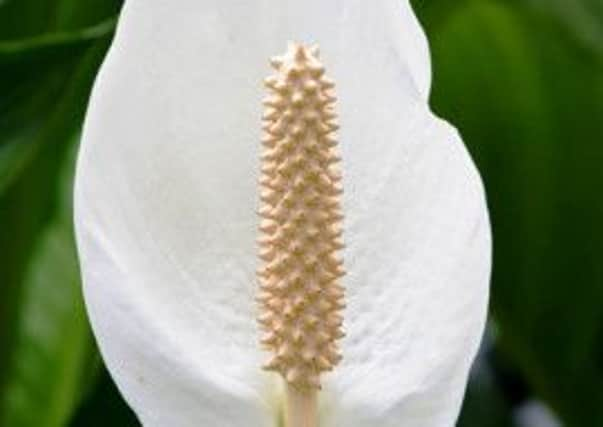Peace and love


Spathiphyllum is better known as a peace lily and is one of Britain’s best-loved and most common of houseplants but it’s also one of the most neglected, left to fend for itself in places where most plants would simply refuse to grow.
So that’s why you can find a peace lily in a dark hallway, a cold conservatory, alongside a radiator as hot as Hell, or anywhere where a plant is required to be – like on my kitchen windowsill where it receives plenty of natural light, a moist atmosphere and a minimum temperature of 60F. So, because those are the conditions it likes best, it’s quite happy and it hasn’t complained about the view.
Advertisement
Hide AdAdvertisement
Hide AdUnfortunately, it’s in a minority because many peace lilies are crying out for bright light (not direct sunlight) decent compost, to be kept moist but not waterlogged, and to be fed regularly in spring and summer. Few get what they want.
Spathiphyllum comes from South America, so here it’s a long way from home. Perhaps we should make it more welcome – give it the right growing conditions and look out for red spider mite or leaves which shrivel and drop off.
Hot, dry air is responsible for the both problems, so mist the foliage in summer with tepid water and stand the plant on a dish of moist gravel to keep the air moist.
In spring, repot and replace the compost. If necessary, split the large rootball, clean off the rhizomes and give them their own individual pots...several perfect little plants from just one.
Advertisement
Hide AdAdvertisement
Hide AdWhen the long-lived flower(s) start to look past their best, cut them off as close to the base as possible.
Spathiphyllum is more than just a plant – it helps to clean indoor air of many environmental contaminants, including benzene, formaldehyde, and other pollutants, so it’s certainly worth growing in the average home.
Conversely, the peace lily contains calcium oxalate crystals which can cause skin irritation. But I think it’s worth the risk. Just wear some gloves.